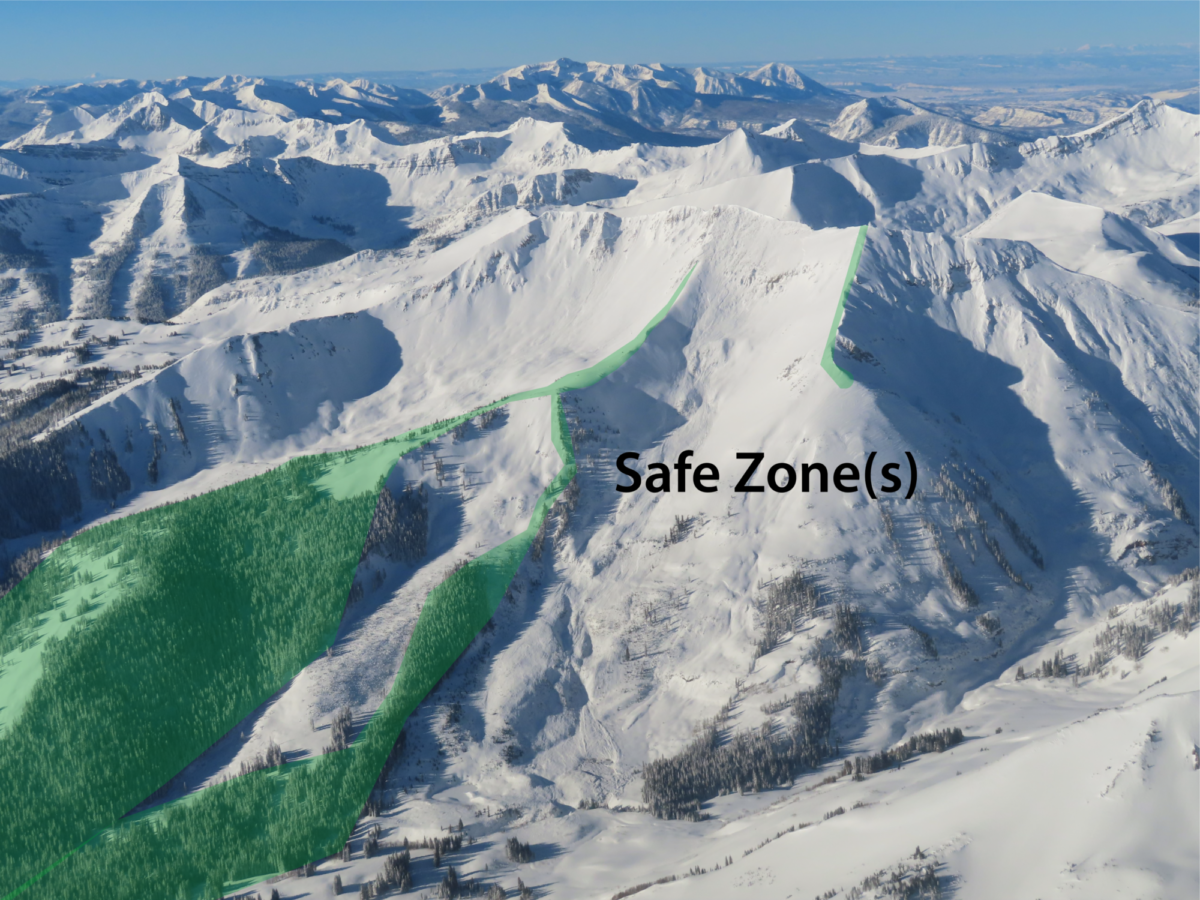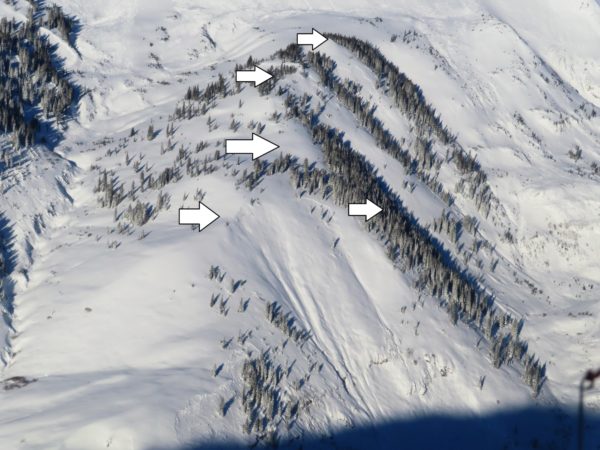A location within avalanche terrain that either minimizes or eliminates a person’s exposure to avalanche hazard
The use of safe zones is an important part of group travel in avalanche terrain. For example, if your group is crossing or descending an avalanche path, the best practice is to expose only one person to the path at a time and regroup in safe zones. Appropriate safe zones can vary depending on avalanche conditions and terrain. For very large avalanche problems, safe zones may be limited to mature timber and ridgetops. For small avalanche problems, safe zones are more prevalent and might include rock outcrops, benches in the terrain, clusters of trees, ribs in the terrain, etc. The more complex the avalanche terrain, the fewer safe zones are available.


